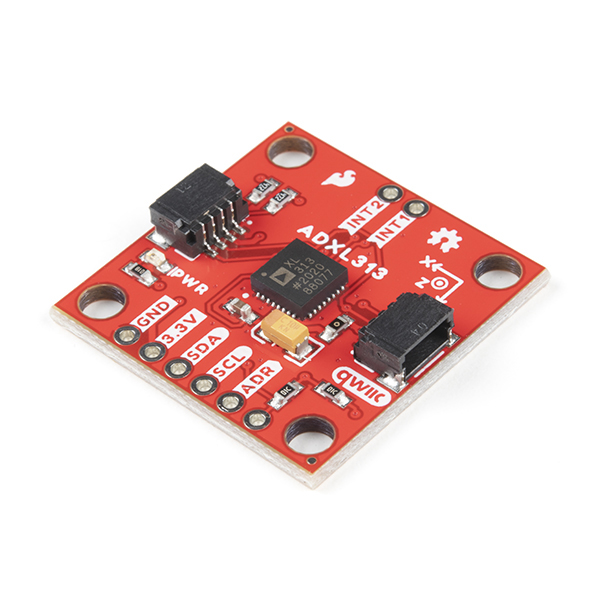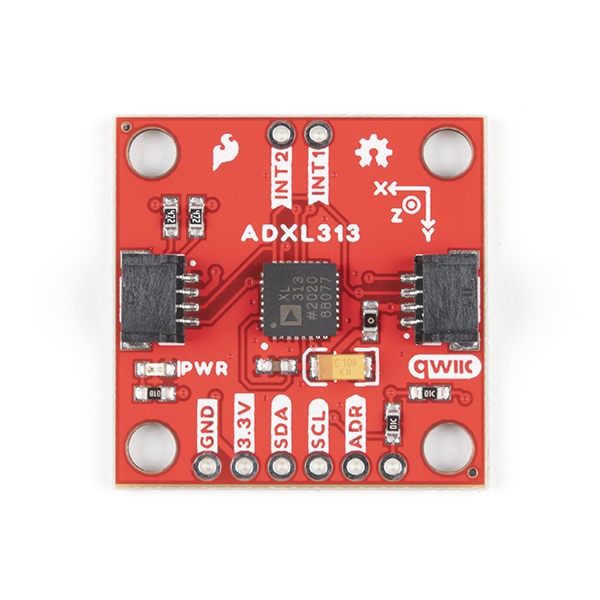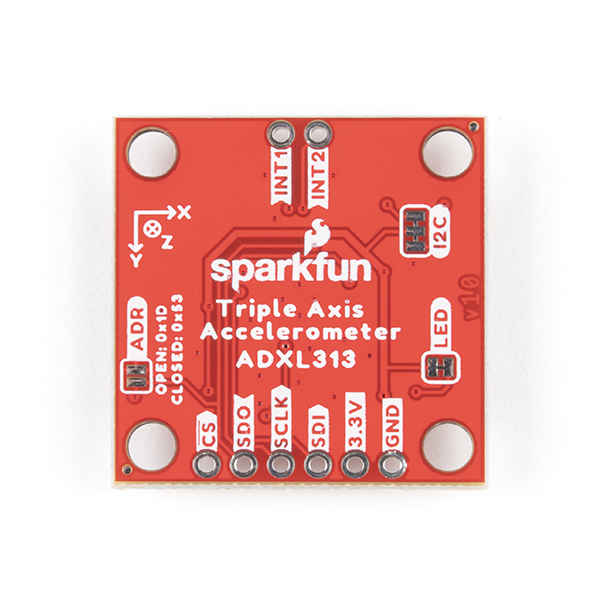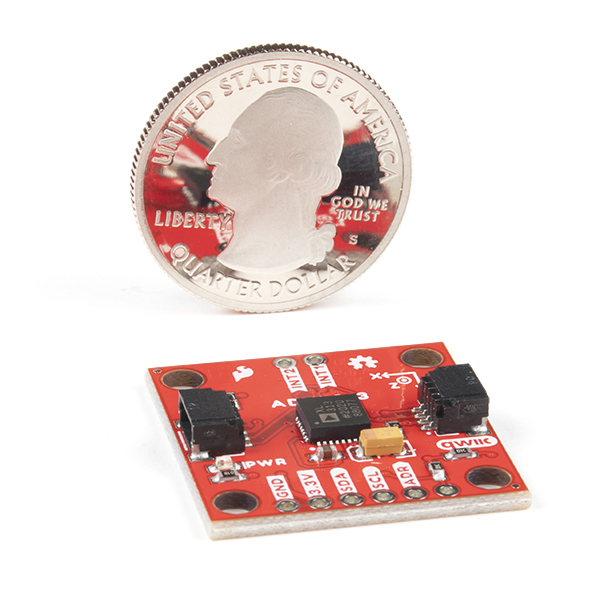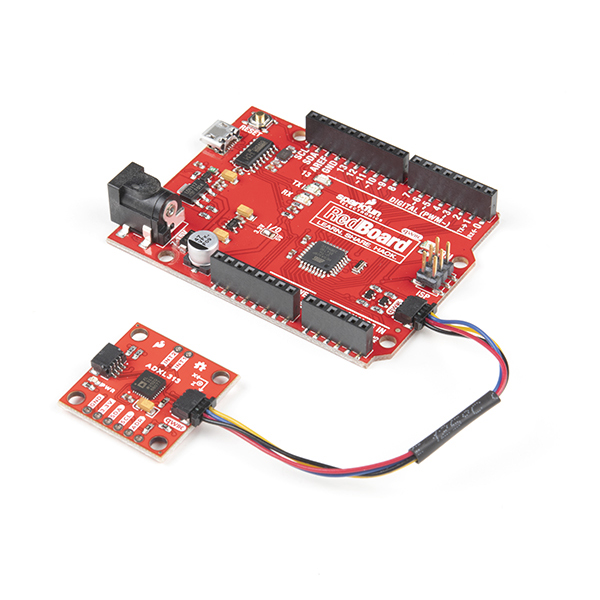SparkFun Triple Axis Digital Accelerometer Breakout - ADXL313 (Qwiic)
The SparkFun ADXL313 Breakout is a low power, high resolution (up to 13-bits) 3-axis accelerometer for measurement up to ±4g. This breakout measures the static acceleration of gravity in tilt-sensing applications, as well as dynamic acceleration resulting from motion or shock. Digital output data is formatted as 16-bit two's complement and is accessible through the on-board Qwiic connectors (I2C) or SPI.
The ADXL313 Breakouts high resolution and low noise enable resolution of inclination changes of as little as 0.1°, while a built-in FIFO facilitates using oversampling techniques to improve resolution to as little as 0.025° of inclination. The integrated 32-level FIFO can also be used to store data to minimize host processor intervention, resulting in reduced system power consumption. Additional low power modes enable intelligent motion-based power management with threshold sensing and active acceleration measurement at extremely low power dissipation.
Getting the ADXL313 Qwiic breakout set-up is easy. Simply supply the accelerometer with power and communication via the Qwiic connector to your chosen Qwiic development board and you will be good to go. Example use cases for the ADXL313 from Analog Devices include car alarm, hill start aid (HSA) systems, electronic parking brakes, and data recorders applications (black boxes).
The SparkFun Qwiic Connect System is an ecosystem of I2C sensors, actuators, shields and cables that make prototyping faster and less prone to error. All Qwiic-enabled boards use a common 1mm pitch, 4-pin JST connector. This reduces the amount of required PCB space, and polarized connections mean you can’t hook it up wrong.
- Measurement Range: ±0.5g, ±1g, ±2g, ±4g
- High Resolution (up to 13-bit)
- Low Power:
- Less than 300 µA at maximum data rate
- 0.1 µA in Standby Mode
- Low Noise (150 μg/√Hz)
- Built-in Sensing Functions:
- Activity (presence of motion) & inactivity (absence of motion)
- User defined acceleration level on any axis
- Functions can be mapped to interrupt pins
- 32 level FIFO for reduced processor intervention & system power consumption
- Self-Test Functionality
- I2C Address (7-bit): 0x1D (Default), 0x53
- 2x Qwiic Connectors
- SPI available on PTH header pins (3-wire and 4-wire modes)
SparkFun Triple Axis Digital Accelerometer Breakout - ADXL313 (Qwiic) Product Help and Resources
SparkFun Qwiic 3-Axis Accelerometer (ADXL313) Hookup Guide
November 5, 2020
Let's get moving with the SparkFun Triple Axis Digital Accelerometer Breakout - ADXL313 (Qwiic), a low cost, low power, up to 13-bit resolution, 3-axis accelerometer with a 32-level FIFO stack capable of measuring up to ±4g. This hookup guide will get users started reading measurements from the ADXL313, by Analog Devices, with an Arduino microcontroller, Jetson Nano, or Raspberry Pi.
Core Skill: Programming
If a board needs code or communicates somehow, you're going to need to know how to program or interface with it. The programming skill is all about communication and code.
Skill Level: Rookie - You will need a better fundamental understand of what code is, and how it works. You will be using beginner-level software and development tools like Arduino. You will be dealing directly with code, but numerous examples and libraries are available. Sensors or shields will communicate with serial or TTL.
See all skill levels
Core Skill: Electrical Prototyping
If it requires power, you need to know how much, what all the pins do, and how to hook it up. You may need to reference datasheets, schematics, and know the ins and outs of electronics.
Skill Level: Rookie - You may be required to know a bit more about the component, such as orientation, or how to hook it up, in addition to power requirements. You will need to understand polarized components.
See all skill levels
Comments
Looking for answers to technical questions?
We welcome your comments and suggestions below. However, if you are looking for solutions to technical questions please see our Technical Assistance page.
Customer Reviews
No reviews yet.

